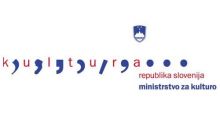The Slovenian media policy has never been based on thorough analyses and strategic approach.
Discriminatory policies of minority protection in Slovenia: unequal access to media


Discrimination of minority communities from former Yugoslavia in Slovenia’s minority policies can be observed in various areas of public policy, among which the access to media, including the public media and media established by the minority communities.
Only in 2014, the 15-minute weekly broadcast on public service TV channel TV Slovenija was introduced to present situation and life of the six communities of nations of former Yugoslavia, while Italian and Hungarian minorities have a special radio and television minority program broadcasting daily in minority languages within the structure of public service broadcaster RTV Slovenija. Roma community has its weekly radio show at Radio Slovenija since 2007 and at TV Slovenija since 2008. Even further, the programs produced within RTV Slovenija for Italian and Hungarian minorities and weekly broadcasts produced for Roma community are entirely financed by the Office for National Minorities of the Government of the Republic of Slovenia in the amount of 1.58 million euro, while the TV broadcast introduced in 2014 by RTV Slovenija on its own to allow to minorities from former Yugoslavia access to public media is not financed by the Government at all.
In total, the Government of Slovenia through various mechanisms provides financial support for media serving the information and language rights of Hungarian, Italian and Roma communities (including public service broadcaster, but also media established by minority communities) in the amount of 2.4 million euro on annual basis (in 2014), mostly directly financed by the Office for National Minorities to the public broadcaster or to minority media of these communities while six communities of nations from former Yugoslavia can apply to a call for projects of immigrant communities for small grants within the Public Fund for Cultural Activities aimed at non-professional, amateur culture, and through that source received in 2014 altogether 24,000 euro for media activities (mostly for newsletters, receiving individual grants around 800 euro for a media outlet per community on annual basis).

Public funding for access to media for minority communities from former Yugoslavia, compared to other minority groups in Slovenia in 2015 (Foto: RTV SLO)
This is an illustration how the minority protection in Slovenia is provided in a way to establish hierarchy between minority communities with the highest protection of minority rights being provided to Italian and Hungarian minority, with Roma having lower level of protection (in terms of range of rights, but also in terms of institutional framework and financial resources allocated for that purpose by the state), and finally with minorities from nations of former Yugoslavia – Bosniaks, Serbs, Croats, Macedonians, Montenegrins and Albanians (from Kosovo) – having almost no special minority protection. Such set-up follows the provisions in the Constitution of the Republic of Slovenia (1991) in which no reference is made to the communities of nations from former Yugoslavia, and is also reflected in a number of laws. Several initiatives of the self-organised coordination body of minority communities from former Yugoslavia to regulate their status, including possible change of the Constitution, failed. The disparity in the range of minority protection is especially apparent when the size of these communities is compared with communities of nations of former Yugoslavia (Bosniaks, Serbs, Croats, Macedonians, Montenegrins and Albanians) including altogether around 200,000 members, while Italian, Hungarian and Roma communities are much smaller, with total number of all three communities being around 20,000.
However, in 2011, the Parliament adopted Declaration on the Situation of National Communities of Members of Nations of Former Yugoslavia in Slovenia, a document proclaiming readiness to improve the situation of those communities. The declaration was followed by the establishment of a council within the structure of the Ministry of Culture to coordinate possible actions for improvement of the situation. No concrete policy measures have been initiated as a result of the work of that body, which had even been dismissed for certain period under the excuse of austerity measures in the public administration.


